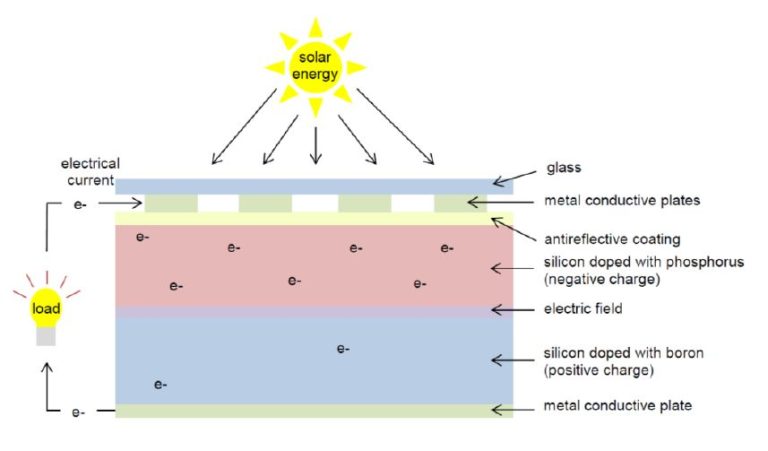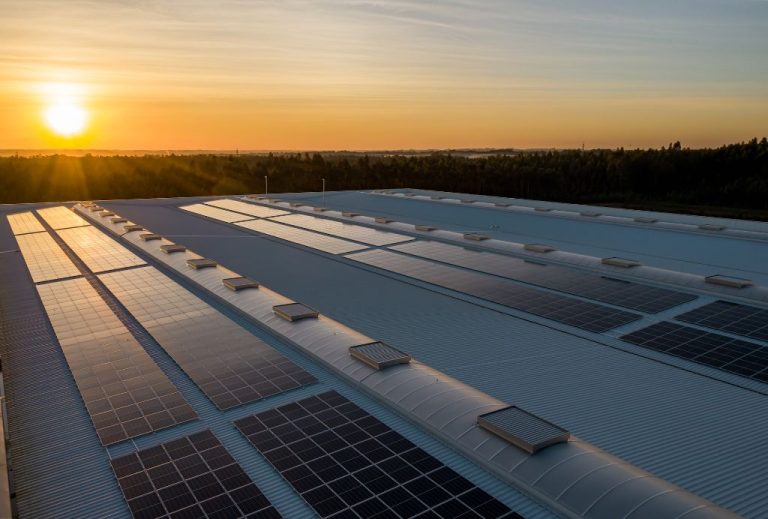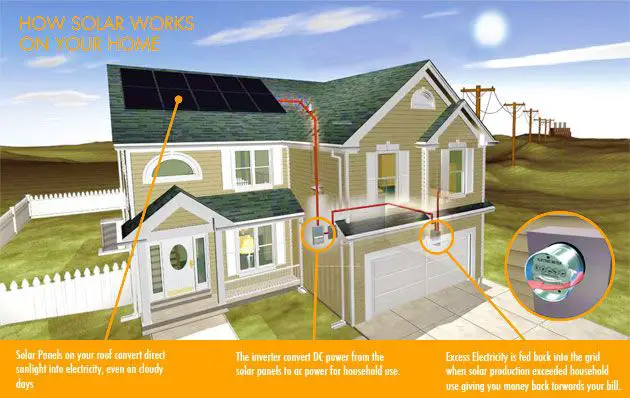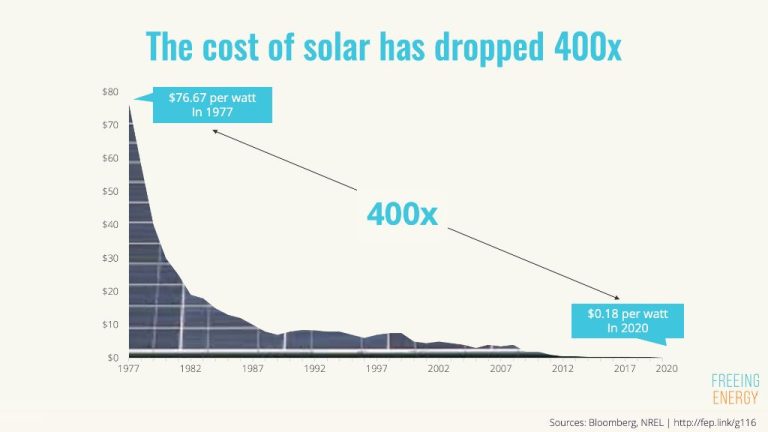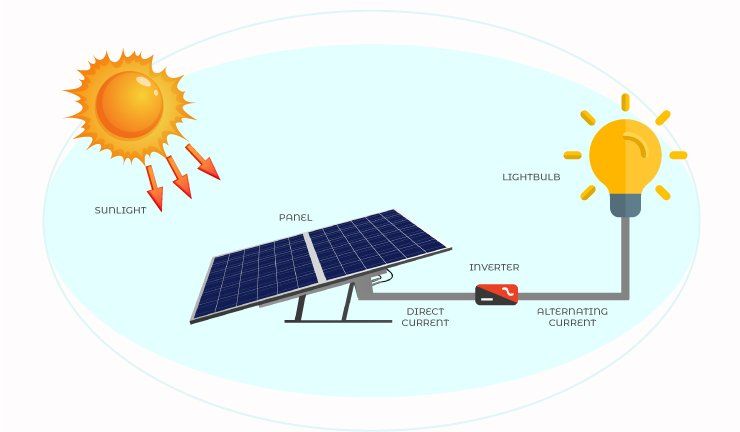Does Solar Energy Have Potential?
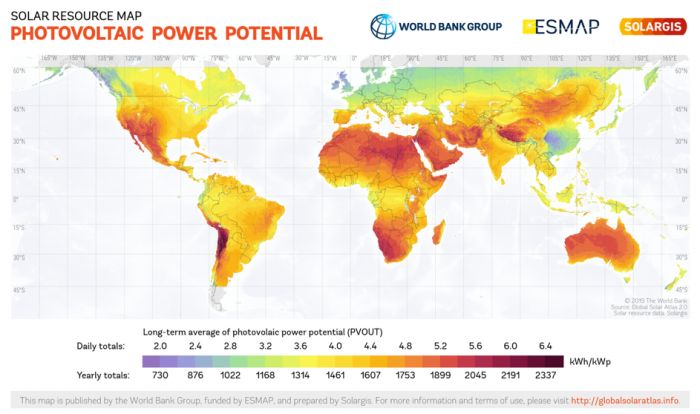
Solar energy, which converts sunlight into electricity using photovoltaic panels or solar thermal collectors, has experienced remarkable growth over the past decade. The solar industry has expanded at an average annual rate of 24% in recent years, catalyzed by declining costs and supportive policies like the federal Investment Tax Credit. 1
With such rapid expansion, some wonder whether solar can continue this trajectory and expand its share of electricity generation. This article examines the potential of solar energy going forward. Does solar have room to grow, or are there obstacles that will limit its future capacity?
Declining Costs
The costs of solar panels and installation have dropped substantially over the past 10 years, making solar energy much more affordable. According to an article on CNET, solar panel prices have fallen from around $50,000 per system just a decade ago to around $20,000 today for the average home solar system. This price drop is thanks to lower material and manufacturing costs as well as efficiency gains that allow solar installers to use fewer panels (https://www.cnet.com/home/energy-and-utilities/why-the-cost-of-solar-panels-will-likely-keep-falling/). An article from Arka360 similarly discusses how solar panel prices have dropped significantly due to government incentives and economies of scale in manufacturing (https://arka360.com/ros/solar-panel-prices-decline/).
Experts predict prices will continue to decrease, making solar power even more cost competitive with fossil fuels. However, some advise that the tax credits and incentives available now may offset further incremental drops in the future. The timing of a solar installation involves more considerations than just future panel pricing (https://www.cnet.com/home/energy-and-utilities/should-you-wait-to-buy-solar-panels/). Overall, the significant reductions in solar costs have been a major driver in the growth of residential and utility-scale solar adoption.
Improving Efficiency
Solar cell efficiency has gradually improved over time due to advances in materials and manufacturing processes. Crystalline silicon solar cells are the most common today, with average module efficiencies around 20% for residential installations. However, silicon solar cell efficiency in lab settings has reached as high as 27.6% (1).
Major gains are expected in the coming years thanks to emerging technologies like perovskite solar cells. Perovskites have achieved lab cell efficiency levels over 25%, and researchers predict commercial modules could reach 30-35% efficiency or more as the technology matures (2). Tandem solar cells that combine silicon and perovskite have already reached 30% efficiency in labs (3). If commercialized successfully, these advancements could boost solar panel efficiency by 50-75% compared to standard panels today.
Abundant Resource
The sun bombards the Earth with an enormous amount of energy every day. According to data from NASA, the amount of solar energy that hits the Earth’s surface in one hour is about 420 quintillion joules [1]. To put that into perspective, the total global energy consumption in 2013 was estimated at 549 quadrillion joules [2]. This means the sun provides more energy to the Earth in an hour than the world currently uses in an entire year. The potential of solar power is clearly vast given the sheer abundance of the sun’s energy.
Even if only a tiny fraction of the sunlight that reaches the Earth could be converted to usable energy, it would still amount to significantly more than our current energy needs. Advances in solar panel technology and installation methods are helping to unlock more of the sun’s abundant energy every year. As solar becomes increasingly cost-competitive with fossil fuels, the world can tap into this bountiful renewable resource to power our future.
Environmental Benefits
Solar energy provides substantial environmental benefits compared to conventional energy sources. By generating electricity without combusting fossil fuels, solar power avoids emitting greenhouse gases like carbon dioxide and other air pollutants. According to the U.S. Energy Information Administration, the average emissions per kilowatt-hour from a solar photovoltaic system is 0.07-0.18 pounds of carbon dioxide equivalent, over 90% less than average grid electricity (1.21-1.23 lbs CO2e/kWh) (Source). The Environmental Protection Agency states that shifting the United States’ electricity mix towards renewable sources could reduce power sector carbon dioxide emissions by over 80% by 2050.
In addition to mitigating climate change, reduced air pollution from solar energy provides public health benefits. Burning fossil fuels releases pollutants like sulfur dioxide, nitrogen oxides, and particulate matter, which contribute to smog, acid rain, and respiratory illnesses. Per the EPA, power plant emissions are linked to over 30,000 premature deaths annually in the U.S. Solar avoids these impacts by generating electricity cleanly.
Lastly, solar energy requires essentially no water to produce electricity, while thermoelectric power plants consume vast quantities. This allows solar to conserve water, especially in arid regions. The Union of Concerned Scientists found that transitioning to 100% renewable electricity in the U.S. would lower total power sector water use by 85%.
Job Creation
The solar industry has created a significant number of jobs in recent years. According to the Solar Jobs Census from the Interstate Renewable Energy Council (IRENA), there were over 250,000 solar jobs in the United States in 2021, representing an increase of over 50% since 2015 [1]. These jobs span many areas including manufacturing, construction, installation, operations, and maintenance.
Major solar manufacturers like SunPower employ thousands of people in panel and component manufacturing [2]. Installation of solar panels also creates many blue-collar construction jobs. The North American Board of Certified Energy Practitioners (NABCEP) offers training and certification programs to train solar installers and ensure high quality installations [3]. Once installed, solar arrays require technicians for ongoing maintenance and repairs. Trade groups like the The Association For Renewable Energy and Clean Technology (REACT) provide training programs tailored to these needs [4].
The Solar Foundation projects there will be over 400,000 solar jobs in the U.S. by 2030 as costs continue to fall and adoption rises [5]. The growth of solar jobs will positively impact local economies and provide stable careers.
Grid Resiliency
Distributed solar energy generation can significantly improve electricity grid resiliency and security. When power goes out from extreme weather or other disruptions, rooftop solar panels with battery storage can provide emergency power at critical facilities like hospitals, fire stations, shelters, and homes. This allows communities to maintain essential services when the larger grid is compromised. According to the U.S. Department of Energy, “A completely resilient electric grid will help communities keep the power on during man-made or natural disruptions.”
In addition, distributed solar generation reduces strain on the centralized grid during peak demand times. By generating electricity where it is used, solar panels reduce the amount of power that has to be transmitted long distances. The decentralized nature of rooftop solar makes the overall grid less vulnerable to single points of failure. As reported by the Center for American Progress, “While solar and wind are variable, or ‘intermittent,’ resources, grid operators have many options to ensure the flexibility and reliability of electricity supply even as they integrate high levels of renewable energy.”
With smart inverters and other emerging technologies, rooftop solar systems can be integrated into microgrids or virtual power plants. This allows solar panels to provide grid services that further strengthen resiliency. Distributed solar energy generation is a key way for communities to maintain power in the face of increasing climate-related disasters.
Sources:
https://www.energy.gov/eere/solar/solar-and-resilience-basics
Obstacles
While solar energy has great potential, there are some obstacles that need to be addressed. One major challenge is the intermittent nature of solar power generation, since solar panels only produce energy when the sun is shining (Christensen Institute, 2022). This variability can make integrating large amounts of solar power into the electric grid difficult. Energy storage solutions like batteries can help mitigate this issue.
Land use constraints are another barrier, as utility-scale solar projects require significant amounts of land. However, rooftop solar on homes and buildings helps alleviate land use pressures. Transmission infrastructure also needs major upgrades to handle the influx of solar and other renewable energy sources (Shahzad, 2022). Building out transmission lines takes time and substantial investment.
There are also financial and psychological obstacles to rooftop solar adoption at the consumer level. The high upfront costs can deter homeowners, even though solar pays off in the long run (Energy5, 2022). Overcoming fears and lack of knowledge about how solar works is another adoption barrier that education and outreach can help address.
Policies and Incentives
The United States federal government offers tax credits to support the adoption of solar energy. The solar Investment Tax Credit (ITC) allows homeowners to deduct 26% of the cost of installing a solar energy system from their federal taxes through 2022. This tax credit drops to 22% in 2023 before expiring after 2024 [1].
Many U.S. states, cities, utilities, and municipalities offer additional financial incentives like rebates, performance-based incentives, renewable energy credits, and property tax exemptions to further encourage solar adoption [2]. For example, states like California, Massachusetts, Arizona, Nevada, Florida, New Jersey and others have enacted supportive policies and financial incentives at the state level [3].
These federal and state incentives can greatly reduce the upfront cost of a solar installation for homeowners and businesses, enabling wider adoption of this renewable energy source.
Conclusion
In conclusion, solar energy clearly has immense potential to play a major role in our energy mix going forward. As discussed, the costs of solar continue to fall dramatically, and efficiencies are steadily improving. Solar power offers abundant, renewable energy with zero emissions and significant environmental benefits. Investing in solar can create many new jobs and provide resilience and security for our electric grids. While some challenges like storage and transmission remain, smart policies and incentives can help overcome these obstacles. Given the many benefits, solar power should be rapidly deployed and further developed. With sensible policies, advances in technology, and public and private investment, solar can become a pillar of a clean energy future and make valuable contributions to our energy needs.

